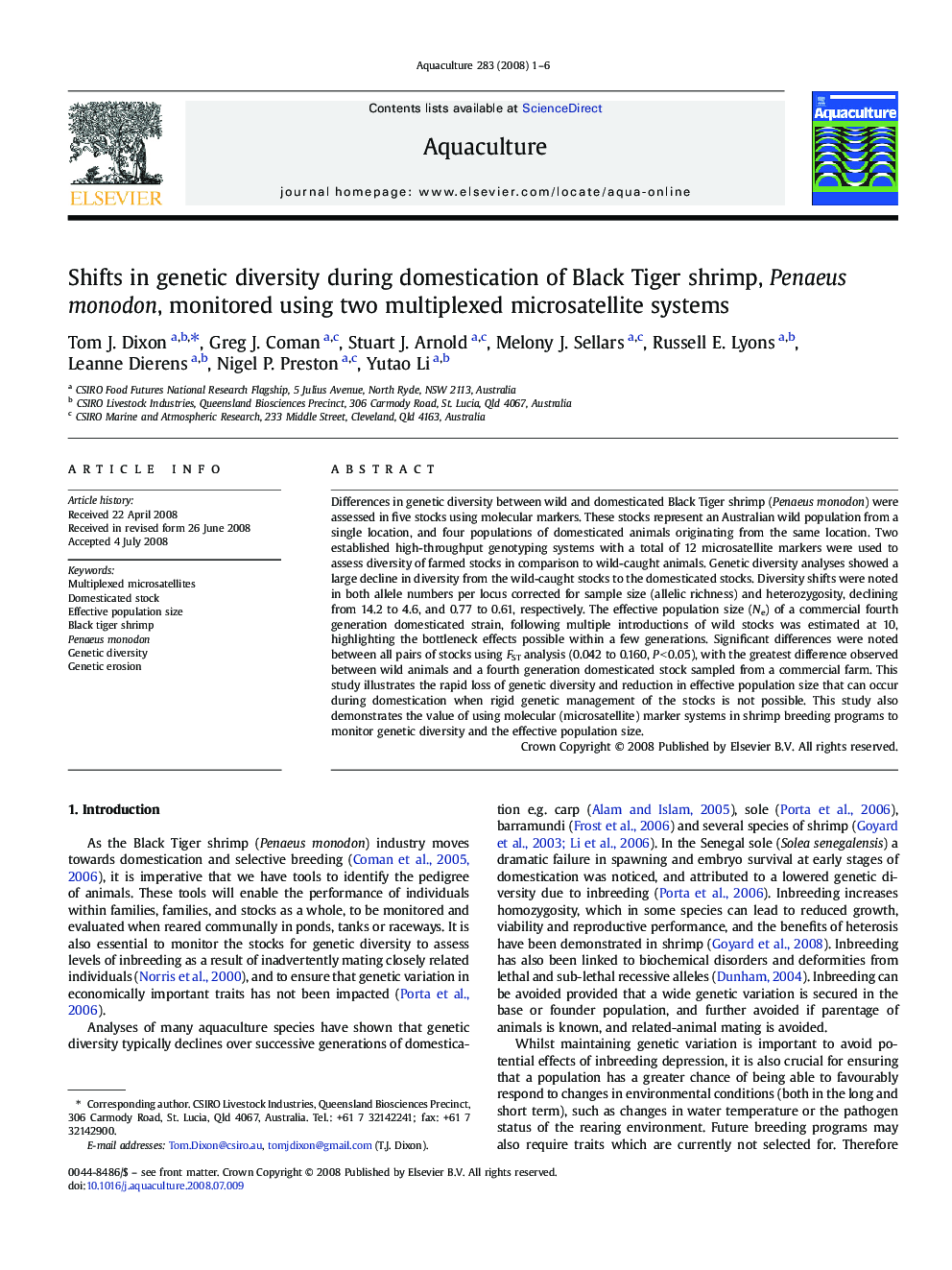| Article ID | Journal | Published Year | Pages | File Type |
|---|---|---|---|---|
| 2424468 | Aquaculture | 2008 | 6 Pages |
Differences in genetic diversity between wild and domesticated Black Tiger shrimp (Penaeus monodon) were assessed in five stocks using molecular markers. These stocks represent an Australian wild population from a single location, and four populations of domesticated animals originating from the same location. Two established high-throughput genotyping systems with a total of 12 microsatellite markers were used to assess diversity of farmed stocks in comparison to wild-caught animals. Genetic diversity analyses showed a large decline in diversity from the wild-caught stocks to the domesticated stocks. Diversity shifts were noted in both allele numbers per locus corrected for sample size (allelic richness) and heterozygosity, declining from 14.2 to 4.6, and 0.77 to 0.61, respectively. The effective population size (Ne) of a commercial fourth generation domesticated strain, following multiple introductions of wild stocks was estimated at 10, highlighting the bottleneck effects possible within a few generations. Significant differences were noted between all pairs of stocks using FST analysis (0.042 to 0.160, P < 0.05), with the greatest difference observed between wild animals and a fourth generation domesticated stock sampled from a commercial farm. This study illustrates the rapid loss of genetic diversity and reduction in effective population size that can occur during domestication when rigid genetic management of the stocks is not possible. This study also demonstrates the value of using molecular (microsatellite) marker systems in shrimp breeding programs to monitor genetic diversity and the effective population size.
